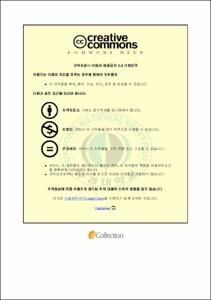사회전환기 중국과 복합위험사회
- Alternative Title
- A Study on the Transitional Society of China and the Complex Risk Society
- Abstract
- Abstract
After reform and opening up of China’s economy, China entered risk society, which erupts potential danger of society, in course of proceeding its rapid industrialization and modernization. Danger- accidents that occur in China largely include features such as complexity and enlargement of the extent. In terms of structural characteristics, a high-speed railroad especially requires highly combined advanced-technology which means it needs high-level of safety measures.
This research ultimately pursues comprehension and verification reason and level of danger accident in China by using synthetically designed methods, based on risk-society theory. First, this research analyzes the reason and level of China proceeding risk-society based on risk-society theory. Second, it lacks of case analysis about risk-society theory in China. Hence this research searches for potential danger in China by using “Wenzhou train accident”. Third, it asks for current questions analyzing countermeasures and prevention of Beijing so that China achieves salutary development in the future.
To achieve these research purposes, I collect and analyze established researches in Korea and China, arranging theoretical basis. Since a developing country like China is in the state of condensed industrialization and modernization, I mainly used discussion of Korea, that entered risk-society much faster than China. Through this process, I could find out there exists more complex and dangerous society than that of Ulrich Beck’s risk society. Also in order to draw type and reason of “Wenzhou train accident”, I utilized Korean-Chinese scholars’ research papers, data and issued documents from many research institutes.
This research confirmed following risk factors through factorial analysis of “Wenzhou train accident”. First, as vestige of planned economy, it is proved that core control unit, LKD2-T1, was produced by subsidiary design companies of the Ministry of Railways. Especially it even didn’t acquire appropriate qualification procedure. And the Ministry of Railways arbitrarily bottom up the controls in relevant track section. Second, owing to rapid modernization in China, the society regards speed as the best principle, leading impractical curtailed construction period, safety negligence trend etc. Third, the Ministry of Railways possessed all authority around administration and operation. This reckless organization became overall danger-factor, because it arouses constant inner corruption of organization.
This research suggests following measures in order to solve risk-society problems of China. First, Beijing and its people need to appreciate that their country is in the course of transforming society and it may cause many dangerous accidents. Second, monitoring system of NGO needs to be reinforced so that it plays an important role in minimizing diversification of risks. Third, it disclose appropriate information to citizens assuring their right to know. Finally, a matter which is already concluded for systematic prevention of danger-accident is required. These measures will help Chinese society solve risk-society problems, and it should think about society development ways based on reflexive modernization in the future.
keyword : Wenzhou train accident, risk-society, complexity risk type
- Issued Date
- 2015
- Awarded Date
- 2015. 2
- Type
- Dissertation
- Publisher
- 부경대학교
- Alternative Author(s)
- Jung-Yong Jun
- Affiliation
- 부경대학교 국제지역학과
- Department
- 대학원 국제지역학과
- Advisor
- 이중희
- Table Of Contents
- 제1장 서론 01
1. 연구배경과 목적 01
가. 연구배경 01
나. 연구목적 04
2. 기존연구 검토 06
3. 연구방법과 구성 09
제2장 위험사회 이론고찰 11
1. 위험 및 위험사회 이론 11
가. 위험의 일상성과 공공성 14
나. 결정 귀속성 15
다. 결과의 확장성 16
2. 위험 복합성에 대한 시각 17
가. 이중위험사회 20
나. 총체적 위험사회 21
다. 사회조직원리의 부실화 21
3. 위험유형의 분류방법 24
제3장 중국의 복합위험사회 특징 26
1. 일반적인 위험분류 방법 28
가. 경제적 위험 29
나. 사회적 위험 30
다. 정치적 위험 33
나. 환경적 위험 34
2. 위험복합성의 발생원인 36
가. 산업화 38
나. 도시화 39
다. 시장화 40
라. 글로벌화 41
제4장 원저우 고속철 사고 사례분석 44
1. 사고경과 45
가. 사고발생 과정 45
나. 사고 발생 후 중국정부의 대응방식 47
다. 사고 이후 조치사항 48
2. 발생요인 분석 50
가. 계획경제의 잔재요인 50
나. 급진적 근대화요인 53
다. 총체적 위험요인 55
3. 대응과정의 문제점 57
가. 안전에 대한 인식부재 57
나. 부실한 구조체계 58
다. 부실한 사고대응 과정 59
라. 사고구간 열차 조기운행 60
4. 소결 62
제5장 결론 64
참고문헌 72
- Degree
- Master
- Files in This Item:
-
-
Download
 사회전환기 중국과 복합위험사회.pdf
기타 데이터 / 1.52 MB / Adobe PDF
사회전환기 중국과 복합위험사회.pdf
기타 데이터 / 1.52 MB / Adobe PDF
-
Items in Repository are protected by copyright, with all rights reserved, unless otherwise indicated.